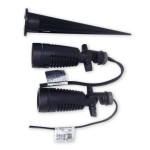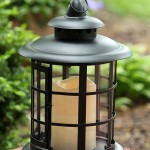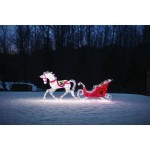Understanding Outdoor Light Wiring Boxes: Essential Components for Safe and Reliable Illumination
Outdoor lighting plays a crucial role in enhancing the aesthetics and security of any property. From illuminating pathways and gardens to providing security around the house, properly installed outdoor lighting systems ensure both safety and functionality. A key element of outdoor lighting systems is the wiring box, which houses the electrical connections and safeguards the system from the elements. This article will delve into the importance and functionalities of outdoor light wiring boxes, providing a comprehensive understanding of their role in outdoor illumination.
Types of Outdoor Light Wiring Boxes
Outdoor light wiring boxes come in various shapes, sizes, and materials, each catering to specific needs. Here are the most common types:
1. Weatherproof Boxes:
These boxes are designed to withstand the harsh outdoor elements, including rain, snow, and extreme temperatures. They typically feature a sealed construction with weather-resistant materials like PVC or metal. Weatherproof boxes are suitable for most outdoor lighting applications.
2. Underground Boxes
Specifically designed for burying underground, these boxes are made from durable materials that can withstand the weight and pressure of the soil. They are ideal for burying wires leading to underground fixtures, such as landscape lighting or spotlights. Underground boxes are essential for creating a clean and organized wiring system while protecting wires from damage.
3. Junction Boxes
Used to connect multiple wires or circuits together, junction boxes provide a convenient point for branching out to different fixtures. They can be surface-mounted or recessed, depending on the application. Junction boxes are crucial for managing a complex outdoor lighting system with multiple light fixtures.
Essential Features of Outdoor Light Wiring Boxes
Outdoor light wiring boxes are engineered to provide reliable and safe operation in the elements. Here are some key features to consider:
1. Watertight Seal:
A watertight seal is crucial for preventing moisture intrusion into the box, protecting electrical components from damage. Look for boxes with a high ingress protection (IP) rating, indicating their level of resistance to water and dust. IP65 is a common rating for outdoor applications.
2. Knockouts:
Knockouts are pre-defined holes in the box that allow for easy entry and exit of electrical wires. They can be easily removed using a knockout punch, providing flexibility in wiring configurations.
3. Sufficient Space:
The box should have ample space for accommodating all the necessary electrical components, including wires, connectors, and terminal blocks. Insufficient space can lead to overcrowding and potential safety hazards.
4. Grounding Terminal:
A grounding terminal is essential for safety, providing a path for electrical currents to ground in case of a fault. Ensure that the box includes a properly functioning ground terminal.
Installing an Outdoor Light Wiring Box
Installing an outdoor light wiring box requires careful attention to detail to ensure safe and reliable operation. Here are some key steps involved:
1. Selecting the Right Location:
Choose a location for the box that is easily accessible for wiring and maintenance. It is also essential to consider the proximity to the fixtures it will serve.
2. Preparing the Mounting Surface:
Clean and prepare the mounting surface to ensure a secure and stable installation. This may involve drilling holes for mounting screws or using adhesive to attach the box to the wall or pole.
3. Running the Wires:
Carefully run the electrical wires from the main power source to the wiring box, ensuring that they are properly insulated and secured. Use cable ties or staples to keep the wires organized and prevent tangling.
4. Connecting the Wires:
Inside the box, connect the wires to the appropriate terminals, ensuring that the connections are tight and secure. Use wire nuts or terminal blocks for reliable connections.
5. Testing the Installation:
After completing the wiring, carefully test the installation to ensure that the lights are functioning correctly. Check for any potential issues, such as loose connections or faulty wires.
Outdoor light wiring boxes are essential components of any outdoor lighting system, ensuring safe and reliable operation in the elements. By understanding their types, essential features, and installation process, homeowners can ensure their outdoor lighting systems are both functional and aesthetically pleasing. Remember to prioritize safety by following proper installation procedures and using qualified electricians for complex wiring projects.

Replacing An Outdoor Light Fixture

Replacing An Outdoor Light Fixture

How To Install An Exterior Electrical Box For A Light Fixture On The Wood Siding

Outdoor Light W No Junction Box Lighting Ceiling Exhaust Fan

How To Install A Porch Light Exterior Fixtures Lighting
How To Replace An Outdoor Light

Sigma Engineered Solutions Metal Weatherproof New Work Round Electrical Box In The Boxes Department At Com
How To Replace An Outdoor Light

Electrical Box For Exterior Light Fixture Greenbuildingadvisor

Home Improvement How To Remove Replace Outdoor Light Fixtures Porch Driveway Etc
Related Posts







